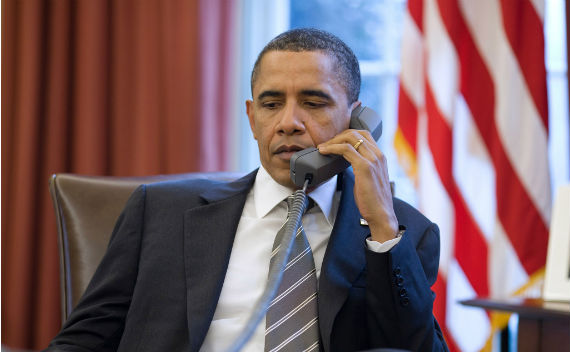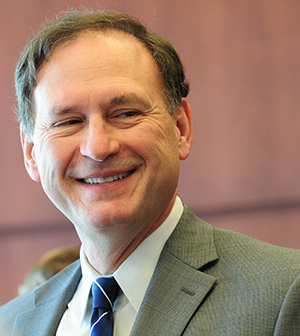Oral argument for the California Proposition 8 case has ended in Washington, D.C., and the Supreme Court audio and transcript are now up. It’s pretty inconclusive from today’s session what kind of ruling the Justices are going to come up with, but that didn’t stop the Twittersphere from exploding into varying degrees of rage, joy and punditry. Here is a brief recap in tweet form, culled from legal commentators, journalists and the rest of the peanut gallery:
Daybreak over the Supreme Court. Hundreds now in line. twitter.com/jwpetersNYT/st…
— Jeremy W. Peters (@jwpetersNYT) March 26, 2013
Best sign at the Supreme Court today: “Dear Scalia: Y.O.L.O.” twitter.com/chuckwestover/… #scotusyolo
— ThinkProgress (@thinkprogress) March 26, 2013
It seems like the standing issue will have a bigger role than most thought in the #SCOTUS #Prop8 case… hmm.
— Waymon Hudson (@WaymonHudson) March 26, 2013
#SCOTUS finding a lack of standing on #Prop8 would be like Congress punting on a major spending issue. Oh yeah, they do that all the time.
— Ryan Teague Beckwith (@ryanbeckwith) March 26, 2013
That beautiful moment when J. Kagan essentially forces the pet. to admit there is no harm to the state from #SSM.#SCOTUS #Prop8
— OutrSpaceBonobo (@OutrSpaceBonobo) March 26, 2013
Sotomayor: is any ‘rational basis’ for the state to treat homosexual couples differently Cooper: I DO NOT HAVE ANYTHING TO OFFER YOU
— NewYork,ILoveU (@NYCiLOVEu) March 26, 2013
Kennedy says it’s a close question whether Prop 8 makes a gender classification. Maybe suggests he doubts it could pass heightened scrutiny.
— Marco Lopez (@maloprop) March 26, 2013
Supreme Ct update: J. Kennedy asks about 40,000 CA kids in LGBT families.“The voices of those children is important in this case, isn’t it?”
— Adam Winkler (@adamwinkler) March 26, 2013
If someone is using the corny phrase “the voice of these children” it’s gotta be Kennedy.
— Irin Carmon (@irincarmon) March 26, 2013
Battle of the Titans: Scalia to Olson: When did become unconstitutional to ban gay marriage? 1791? 1868? on.wsj.com/15PZjJH
— JamesVGrimaldi (@JamesVGrimaldi) March 26, 2013
Scalia: “When did it become unconstitutional to exclude gays?” Olson: “When did it become unconstitutional to exclude interracial couples?”
— Patrick O’Neil (@PaddyoNeilio) March 26, 2013
J. Kennedy emphasized uncharted waters; indicated that Loving was new here, but not everywhere, ie, Loving not terribly persuasive to him.
— Michelle Olsen (@AppellateDaily) March 26, 2013
Aren’t “uncharted waters” the waters for which the Supreme Court is supposed to be crafting the charts? #StraightedgeCompassandConstitution
— George Wallace (@foolintheforest) March 26, 2013
Olson quotes Ginsburg: “The history of our Constitution is the story of the extension of con rights to ppl once ignored or excluded.” #prop8
— Samantha Ames (@StealThisTweet) March 26, 2013
Maybe the most awkward moment in today’s gay marriage arguments: Scalia name-dropping Strom Thurmond, regarding old, fertile people.
— David Ingram (@David_Ingram) March 26, 2013
These Supreme Court arguments are inspring in me a musical-comedy about a devoutly Christian couple that learn they’re infertile.#prop8
— John Miranda (@John_Miranda) March 26, 2013
Verrilli: When states allow civil unions, the Equal Protection Clause forbids the exclusion of #ssm. #Time4Marriage #Prop8
— Adam L. Barr (@adamlbarr) March 26, 2013
One issue for Justices, incl Breyer: Would ruling that says states w/ civil unions must offer marriage discourage states from civil unions?
— Michael Crowley (@CrowleyTIME) March 26, 2013
One more takeaway from #scotus argument: Obama administration’s position came in for sharp criticism from left and right alike
— John Gramlich (@johngramlich) March 26, 2013
You mean allowing them to own automatic weapons isn’t enough to satisfy gay people?
— Paul Todd (@ptodd62) March 26, 2013
How could Alito rule on Obamacare when it’s younger than cell phones or the Internet? #justwondering
— AdamSerwer (@AdamSerwer) March 26, 2013
It’s worth nothing that Cooper’s rebuttal focused almost exclusively on Verrilli’s (weaker) argument rather than Olson’s.
— Charles Crain (@charlescrain) March 26, 2013
Arguments done. #scotus won’t uphold or strike down #prop8 bc Kennedy thinks it is too soon to rule on #ssm. #prop8 will stay invalidated.
— SCOTUSblog (@SCOTUSblog) March 26, 2013
Seems Judge Walker’s broad ruling has little chance of surviving. And Justice Kennedy didn’t think much of #prop8 trial evidence.
— Dan Levine (@FedcourtJunkie) March 26, 2013
No majority apparent at #SCOTUS for any particular outcome in Calif. #gay marriage ban case, says @shermancourt: apne.ws/10b995C
— AP Courtside Seat (@AP_Courtside) March 26, 2013
Totally baffled after hearing today”s #ssm args. No clear winner. #scotus
— Jeffrey Toobin (@JeffreyToobin) March 26, 2013
SCOTUS doesn’t rule immediately after oral arguments. First they carefully review and discuss all your blog comments and tweets.
— pourmecoffee (@pourmecoffee) March 26, 2013






